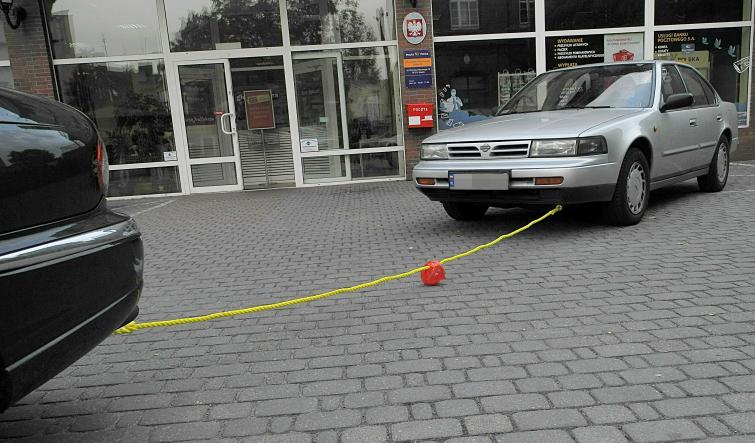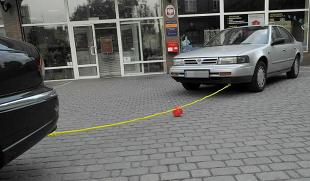
Starting the engine while towing or pushing is a last resort. Why?
 Many drivers from a dozen years ago regularly practiced such a situation - starting the engine on the so-called. pull or push. Now such methods of igniting the power plant are rather not used. Not only because modern cars are less unreliable.
Many drivers from a dozen years ago regularly practiced such a situation - starting the engine on the so-called. pull or push. Now such methods of igniting the power plant are rather not used. Not only because modern cars are less unreliable.

Starting a car engine in a towing or pushing manner, i.e. by being towed by another vehicle or by being pushed by a group of people. We can observe such a picture on the streets, especially in winter. According to many mechanics, this is a poor method and should be treated as a last resort. Why? Because the drive system is loaded, especially the timing.
See also: Wheel geometry - check suspension settings after changing tires
In vehicles with a belt drive, the timing adjustment or even the belt itself can break.
“That's true, but this situation can happen when the timing belt is worn out or not tight,” says Mariusz Staniuk, owner of the AMS Toyota dealership and service in Słupsk.
Most car manufacturers prohibit starting the engine in any way other than using a starter. They justify that the belt may break or the timing phases may change, which will lead to bending of the valves, damage to the engine head and pistons. However, this problem occurs mainly in diesel engines.
See also: Glow plugs in diesel engines - work, replacement, prices. Guide
There are also opinions that such engine operation is harmful to the exhaust system. For example, problems with catalysts are indicated. In pull- or push-drive vehicles, fuel can enter the vehicle's exhaust system and therefore the catalytic converter before the engine has started. This, in turn, means that the component is damaged.
How can fuel get into the catalytic converter? If the whole system works, this is impossible, says Mariusz Staniuk.
However, he adds, running on the stretch or pushing a car with a turbocharger, we risk damaging it. It is not lubricated when the engine is not running.
While a manual transmission car can be pushed (although you risk the breakdowns described above), this is not possible with automatic transmission cars. It remains only to tow to the site. But be careful, there are a few rules to follow.
The shift lever of the towed vehicle must be in the N (neutral) position. In addition, you need to tow such a car at a maximum speed of 50 km / h and take frequent breaks in driving. They are necessary because the gearbox oil pump does not operate when the engine is off, i.e. gearbox elements are not sufficiently lubricated.
See also: Compare automatic transmission: sequential, dual clutch, CVT
Regardless of the type of gearbox, mechanics agree that if you have trouble starting the engine, the best solution is to tow or transport the car on a trailer. You can also try starting the engine with jumper cables using a battery from another running vehicle.
According to the expert
Mariusz Staniuk, owner of the AMS Toyota dealership and service in Słupsk
– Starting the car engine for so-called towing or pushing should always be the last resort. For example, when we are on the road, and the nearest city is far away. If you have to do this, follow a few rules that will make it easier to start the engine. Many drivers mistakenly believe that the engine of a towed car must be started by shifting into second gear (there are even those who choose first). It is much better and safer for the engine to shift into fourth gear. Then the load on the mechanisms will be lower. As for the so-called timing conflict when the engine is running on the haul, it is dangerous only for diesel engines, but not in all cases. Most gasoline engines have a conflict-free timing belt. On the other hand, there is a threat to turbocharged engines - gasoline and diesel engines. This is a turbocharger that is overloaded due to lack of lubrication when starting the engine on the haul. Because oil reaches this mechanism in a few tens of seconds. During this time, the compressor runs dry.
Wojciech Frölichowski

